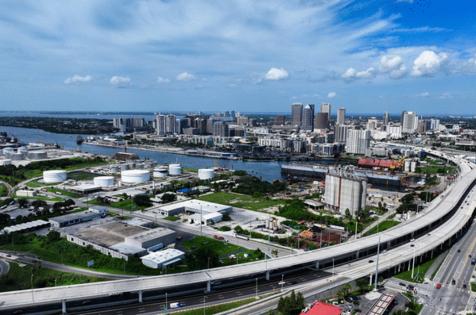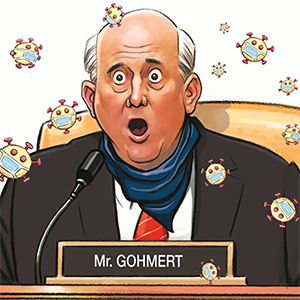John Hill: Can Tampa land Rays stadium without transit?
Published in Baseball
TAMPA, Fla. — Let me first dispense with the obvious: I have no idea where a new owner might take the Tampa Bay Rays. The team could remain in St. Petersburg, move to Tampa or even find a home closer to the rumored buyers, a Jacksonville-based investors’ group.
But one thing about a stadium search in Hillsborough County is clear: As much as any success, one big mistake is shaping the potential locations. I’m talking about Hillsborough’s utter failure to modernize its transportation system. Because of it, these stadium sites are choosing us, not the other way around.
A front-page story Sunday in the Tampa Bay Times drove home the point. My colleagues Colleen Wright and Nina Moske outlined the preferred Hillsborough stadium sites. Most were unsurprising; they’ve been kicked around for years. The surprising part wasn’t that they all had strengths and weaknesses, but that every location — urban and suburban — shared one big negative: Hillsborough’s sclerotic mass transit system compromises them all.
That seems the worst foot to start from. Remember that the rap on Tropicana Field, and St. Petersburg in general, is that nobody can get there easily from Tampa, where a larger population and corporate base presumably could better support the Rays.
Take Ybor Harbor. The planned retail/residential community along the old, industrial waterfront between downtown Tampa and Ybor City has emerged, predictably, as a favorite stadium site. The project offers it all: wealthy residents, high-rise glitz, proximity to downtown and a street vibe that draws locals and tourists alike.
But a stadium here would be wedged into a geography that’s tight to navigate, has limited mass transit and is particularly vulnerable to coastal flooding. The Selmon Expressway would help people attending games from St. Petersburg and Brandon. But the Ybor-Channelside area already is exploding with growth. Sure, when built out, the pedestrian scene will be alive, but visitors will still need a car to go to and from. I can hear baseball fans now: “You can’t get there.”
If anything, the alternatives to Ybor Harbor have even bigger problems. The Florida State Fairgrounds, east of Tampa, is property-rich with interstate access, offering the potential to draw fans from both Tampa Bay and Orlando. It’s also isolated and car-dependent.
The former dog track in Sulphur Springs has land and interstate access, too, but that stretch of Interstate 275 north of downtown Tampa is a parking lot most afternoons. It’s also a no-man’s land miles from the city center, and travelers from Pinellas would still have to cross a bridge and pass the chokepoints at Tampa International Airport and downtown Tampa. I can hear it again: “You can’t get there.”
A stadium in West Shore or near the Buccaneers’ home at Raymond James Stadium could take advantage of some highways and nearby amenities. But the major roadways in both places already are congested during the workweek. Pushing more event traffic into the neighborhoods is no real solution. And while parking garages are fine, a car still has to get there.
The irony is that many of these places would already be served by modern transit had state and local officials followed through on plans over the last two decades. In 2011, then-Gov. Rick Scott rejected $2.4 billion in federal funding for a high-speed rail line connecting Tampa with Orlando. Hillsborough voters approved a mass transit measure in 2018, but it was later torpedoed by the courts. A regional initiative to establish intercounty transit across Tampa Bay went nowhere. You see the impact every day on our roadways.
Every growing community struggles to manage congestion. And transportation isn’t the sole consideration in where the Rays will ultimately play. But the challenge here is more than plunking down a station in Ybor, the dog track, the fairgrounds, or anywhere else. That station must connect with scores of stops throughout Hillsborough and beyond. It must have the capacity to move thousands into and out of a stadium within a fixed period on a routine basis. Mass transit is great at handling volume and surge demand, but we don’t have a real system here.
If the Rays stay in the area, great. But let’s also use this opportunity to recognize the one glaring deficit that keeps holding Tampa Bay back.
____
©2025 Tampa Bay Times. Visit at tampabay.com. Distributed by Tribune Content Agency, LLC.







Comments